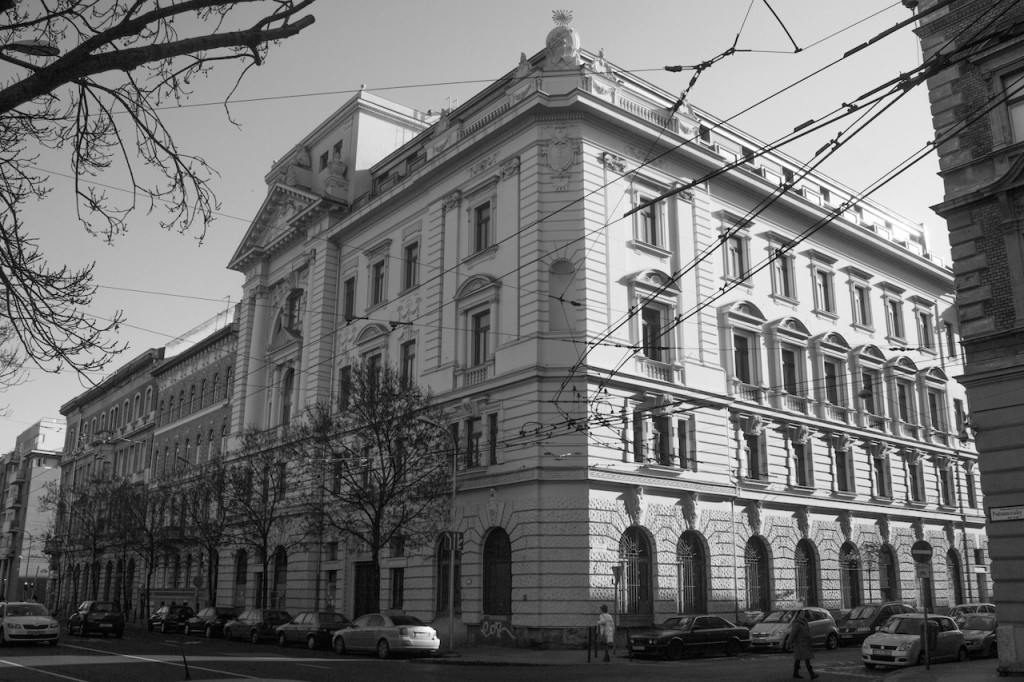The Freemason headquarters in Vörösmarty Street
Budapest, 6th district, 77 Vörösmarty Street
Freemason headquarters, built in 1896. 6th district 77 Vörösmarty Street. At the corner of Vörösmarty and Podmaniczky Streets, now renovated as a luxury hotel.
Source:
https://24.hu/kultura/2015/11/13/tudta-hogy-a-nyugati-palyaudvar-mellett-all-a-magyar-szabadkomuvesseg-egykori-kozpontja/

Freemason headquarters, built in 1896. 6th district 77 Vörösmarty Street. At the corner of Vörösmarty and Podmaniczky Streets, now renovated as a luxury hotel.
Source:
https://24.hu/kultura/2015/11/13/tudta-hogy-a-nyugati-palyaudvar-mellett-all-a-magyar-szabadkomuvesseg-egykori-kozpontja/

Freemason headquarters, built in 1896. 6th district 77 Vörösmarty Street. At the corner of Vörösmarty and Podmaniczky Streets, now renovated as a luxury hotel.
Source:
https://24.hu/kultura/2015/11/13/tudta-hogy-a-nyugati-palyaudvar-mellett-all-a-magyar-szabadkomuvesseg-egykori-kozpontja/
THE IMPORTANCE OF THIS PLACE
In 1897, Pál Ranschburg requested admission to the Democracy Lodge with a wish to “serve the beautiful, the good, and the true”, free of politics, (in the same year, he married Irén Hajós).From that point onward, he also performed tasks as a Freemason, for instance, from 1911, he was the head physician at the Charite Poliklinik (Budapest, 6th district, 68 Csanády Street), where the Freemasons provided free care for poor children (this is still a medical institution as of today).
The choice of the Freemason Headquarters as a venue is justified by Ranschburg having been a Freemason. We have no evidence that he ever set foot in the Headquarters, but we do not know either where the Democracy Lodge he was a member of was located. (This lodge was managed by Dr. Kálmán Bakonyi, with lawyer Dr. Pál Auer as his deputy.) The lodge published the paper “Állam és polgár” (State and Citizen) in the editorial office of Gyula Pikler and maintained the National Child Protection and Fröbel Association. The association managed a home for young single women at 35 Bajza Street, and this building also hosted a valuable Freemason library.
THE HISTORY OF THE PLACE
Freemasons have been present in Hungary since the 18th century with the aim of promoting the ideas of the Enlightenment and forming a brotherhood of all those, regardless of race, religion, or political affiliation, who wish to work for knowledge, enlightenment, progress, and charity (the most famous Hungarian Freemason was Lajos Kossuth, the leader of the Hungarian Revolution of 1848-1849).
Freemasons were banned after the failed revolution, and only in 1868 with the political reconciliation did the Minister of Home Affairs permit the formation of lodges, which operated based on the French and English models. In 1886, two Grand Lodges of different orientations were united to form the Hungarian Symbolic Grand Lodge. From that time until 1919, freemasonry flourished in Hungary: the almost 100 lodges included about 11 thousand Freemasons, including leading personalities of literature, science, economics, and public life (such as Endre Ady, Ignotus, Károly Kernstock, András Mechwart, and Gyula Pikler). Their Headquarters was built at 77 Vörösmarty Street in 1896. During the Hungarian .
Soviet Republic and then the Horthy regime, the operation of Freemasons
was limited because the system feared the spread of the ideas of the liberty and equality of citizens, and because some lodges also set political goals (e.g. general secret ballot, secularization, free education, promoting peace).Their activities were closely monitored by the Secret Police. Freemason lodges also widely practiced charitable activities and maintained charitable organizations ( e.g., the National Child Protection and Fröbel Association, a charity organization to help inmates, homeless shelters, soup kitchens, summer camps for children, a charity supporting the deaf-and-mute, free legal aid, and free bread distribution).The lodges often held their meetings in private homes.
Sources
Berényi Zsuzsanna (2001). A szabadkőművességkézikönyve. Budapest, Heraldika Kiadó
Miskolczi Ambrus (2020). A régi magyarországi szabadkőművesség kozmopolitizmus és nacionalizmus között –
RÁH, etc.